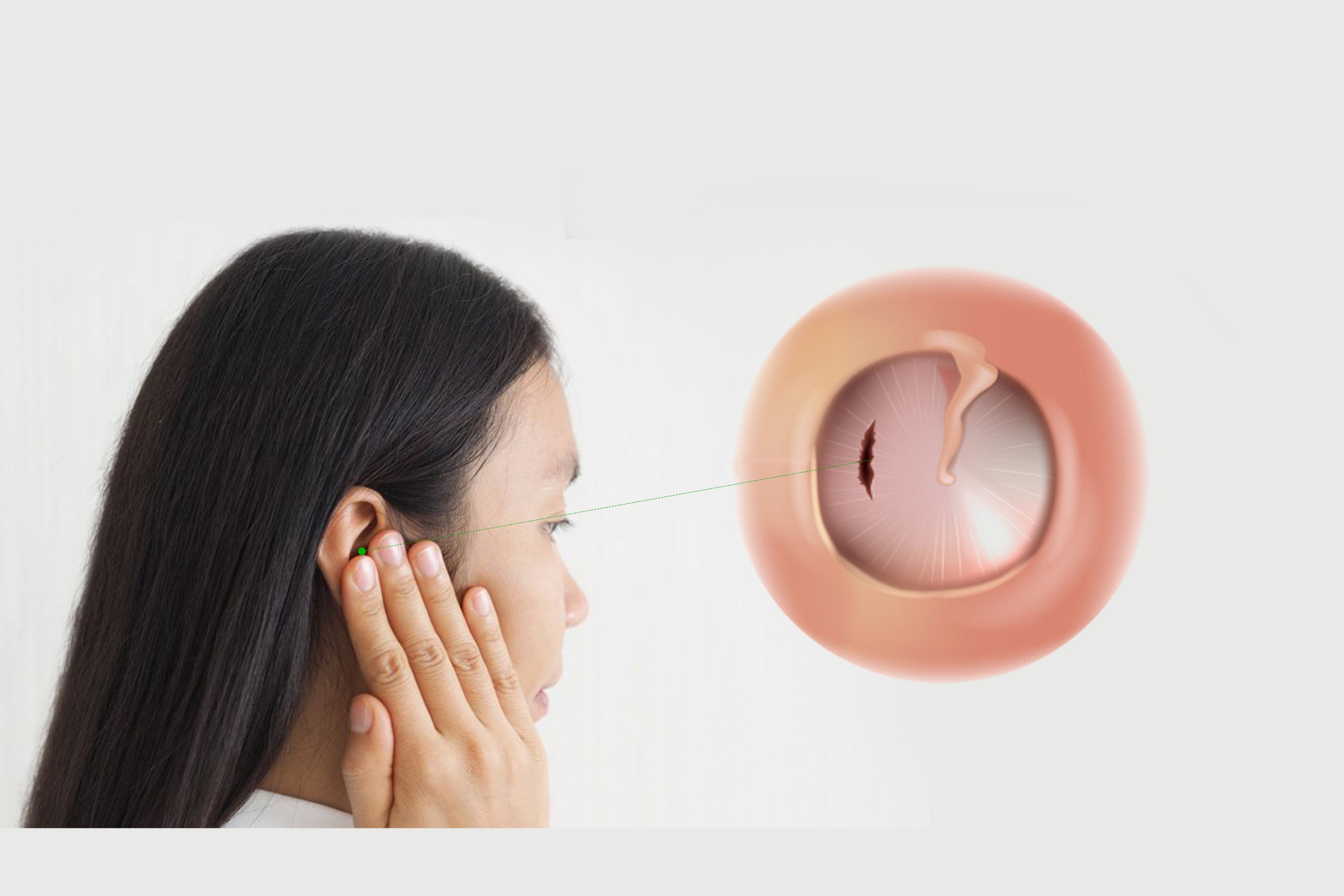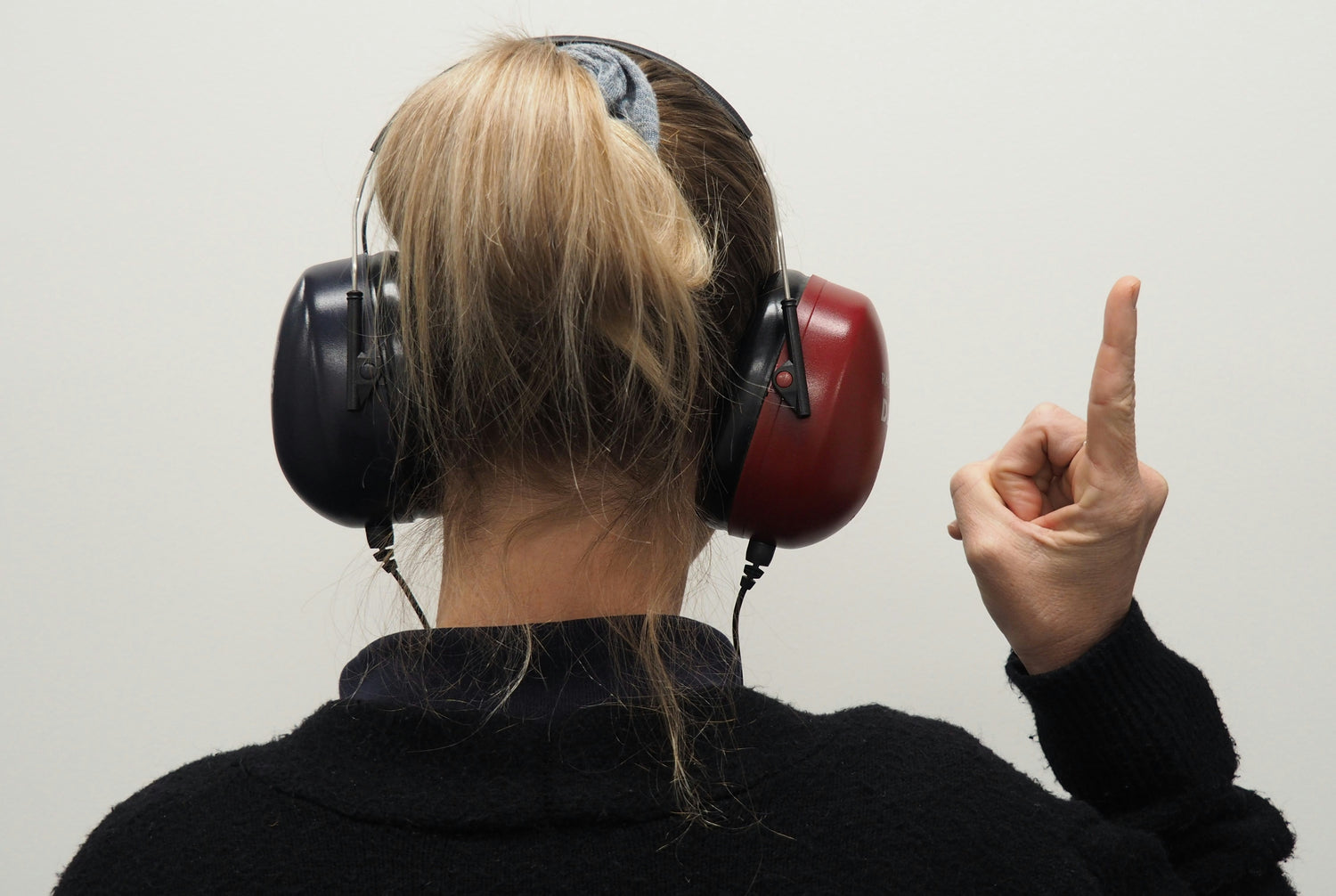A perforated eardrum, commonly referred to as a ruptured eardrum, occurs when a tear or hole develops in the thin membrane that separates the ear canal from the middle and inner ear. This membrane is vital for responding to sound waves, playing a crucial role in the hearing process.
Understanding Perforated Eardrums
Symptoms of Perforated Eardrums
- Bloody discharge or pus-filled discharge from the ear canal
- Fever
- Intense pain in some instances
- Lingering discomfort in the ear - a feeling that “something’s just not right"
- Severe ear pain
- Spinning sensation called vertigo, with accompanying nausea or vomiting
- Sudden hearing loss
- Tinnitus (ringing in the ears)
If you experience any of these symptoms after a sudden injury or exposure to loud noise, it is essential to get your ear checked out by a hearing care professional or an ENT doctor.
Causes of Perforated Eardrum
- Barotrauma from changes in barometric pressure during activities like scuba diving, air travel, or mountainous road driving
- Cholesteatoma
- Ear Infections
- Fluid buildup, especially in children with middle or inner ear infections like otitis media
- Insertion of foreign objects, such as cotton bud, pen, etc
- Sudden exposure to loud sounds
- Trauma to the head or ear, such as car accidents
Is A Ruptured Eardrum Painful?
A ruptured eardrum, also known as eardrum perforation, can be associated with varying levels of pain, influenced by both the root cause and the extent of the damage. If a foreign object is the culprit behind the rupture, you may initially experience a sharp pain, but with time, the discomfort tends to diminish or subside to a more manageable level. In instances where a ruptured eardrum is a result of infection, the associated pain is generally less intense. Some individuals may not promptly recognize the presence of a perforated eardrum, experiencing only mild discomfort.
Promptly seeking medical attention is essential if you suspect a ruptured eardrum, as healthcare professionals can evaluate the situation, identify the cause, and recommend appropriate treatment. Regardless of the specific cause, timely intervention is crucial for proper healing and to minimize the risk of potential complications. Accompanying symptoms such as hearing loss, ringing in the ears (tinnitus), dizziness, and fluid drainage from the ear underscore the importance of a comprehensive medical assessment.
Can You Still Hear with a Ruptured Eardrum?
One of the most common concerns for those diagnosed with an eardrum rupture is whether they will be able to hear again. The answer is usually yes, as long as the injury does not damage the middle or inner ear. In most cases, the eardrum will eventually heal, and the hearing returns to normal. However, seeking medical attention is crucial to prevent permanent damage.
What's the Impact of Perforated Eardrum on Your Hearing?
A ruptured eardrum disrupts its ability to vibrate properly, leading to diminished or muffled hearing. While this hearing loss is typically temporary, its intensity can vary based on the location and size of the injury. If a perforated eardrum goes untreated for an extended period, it can lead to permanent damage.
Can I Still Wear Hearing Aid When I Have A Perforated Eardrum?
After the eardrum has had an opportunity to heal, many patients typically recover their hearing. However, individuals with persistent eardrum perforations, especially those of a chronic nature, may find relief through the use of hearing aids. The positive aspect is that sound perception in cases of conductive hearing loss tends to remain undistorted, distinguishing it from sensorineural hearing loss.
Consequently, those with conductive hearing loss often make excellent candidates for hearing aids. If you are grappling with hearing loss subsequent to a ruptured eardrum, seeking guidance from a hearing care professional is advisable to ascertain the most suitable treatment path tailored to your specific situation.
Treating Ruptured Eardrum
Seeking prompt medical attention is crucial when suspecting a perforated eardrum. A visit to an ENT doctor or hearing care professional involves a thorough examination and diagnosis. Treatment options may include pain management, antibiotics for infections, and, if necessary, surgical intervention such as tympanoplasty.
Is Perforated Eardrum an Emergency?
While perforated eardrums typically do not qualify as emergencies, immediate medical attention is necessary if there is a fracture with blood coming out of the ear along with the rupture.
How Long Does It Take for A Ruptured Eardrum Heal?
The healing time for a ruptured eardrum can vary depending on the size and severity of the perforation, as well as the underlying cause. In many cases, small ruptures may heal on their own within a few weeks without any specific medical intervention. Larger or more severe ruptures, however, may take longer to heal and could require medical treatment.
Here are some general timelines for the healing of a ruptured eardrum:
- Small Ruptures: Small perforations often heal within a few weeks, and the pain may subside relatively quickly. You need to avoid activities that could hinder the healing process, such as swimming or exposing the ear to excess moisture.
- Larger or Complex Ruptures: Larger perforations or those caused by severe infections or injuries may take several weeks to several months to heal. In some cases, medical intervention, such as the placement of a patch or surgical repair, may be necessary to facilitate healing.
Surgery for Perforated Eardrum
If the eardrum does not heal on its own, surgical procedures may be necessary to restore normal hearing. There are two distinct procedures are often considered:
- Paper Patch Myringoplasty: This is a less invasive approach specifically designed for repairing small perforations or tears in the eardrum. During this procedure, a thin, sterile material, such as paper or other absorbable substances, is delicately placed over the perforation. This method is favored for cases with small perforations and generally healthy ear tissue, offering a simpler and less extensive solution.
- Tympanoplasty: This surgical procedure encompasses a broader category of surgical techniques employed for repairing ruptured eardrums. A common type involves using a graft, which can be derived from the patient's own tissue, a donor, or synthetic materials. Tympanoplasty is versatile, suitable for larger perforations or instances where a more comprehensive repair is needed. Beyond graft placement, tympanoplasty may involve additional steps such as addressing issues in the ear canal, middle ear, or inserting tympanostomy tubes to aid in ventilation. Unlike the absorbable material used in paper patch myringoplasty, the graft used in tympanoplasty becomes a permanent component of the healed eardrum.
Recovery Period After Perforated Eardrum Surgery
The complete recovery from eardrum surgery typically spans a few weeks. During this period, it's essential to adhere to the following guidelines:
- Maintain Ear Dryness: Keep the operated ear dry, refraining from showering for the initial days following the surgery. If showering is necessary, ensure the operated ear is adequately covered.
- Monitor Post-Surgery Bleeding: It's normal to experience slight blood drainage for a day or two post-surgery. However, if the bleeding persists, consult your doctor promptly.
- Avoid Blowing Your Nose: Refrain from blowing your nose is typically recommended to prevent pressure changes in the middle ear, which could potentially disrupt the healing process.
- Sneeze with Mouth Open: If you really need to sneeze, ensure your mouth is open to alleviate pressure on the healing ear.
- Limit Physical Activity: Steer clear of engaging in sports or strenuous physical activities for a few days to promote optimal healing.
- Manage Pain: Mild pain can be expected during the recovery phase. Use over-the-counter painkillers or follow the recommendations provided by your surgeon to alleviate discomfort.
By adhering to these recovery guidelines, you contribute to a smoother healing process after perforated eardrum surgery. If you encounter any concerns or unexpected symptoms, consult your surgeon for guidance and reassurance.
Permanent Damage to Perforated Eardrum
If the eardrum has been permanently damaged due to lack of treatment for an extended period of time, various options can help individuals cope with hearing loss. While a damaged eardrum may limit certain treatment options, hearing aids can be a valuable solution. They amplify sounds, assisting individuals in hearing better and improving overall auditory experiences.
Preventing Perforated Eardrum
Guarding against perforated eardrums involves adopting proactive measures to minimize the risk of damage. Here are key steps to prevent eardrum perforation:
- Avoid Foreign Object Insertion: Refrain from inserting any objects into the ear, including cotton swabs or similar items. This helps prevent accidental damage to the delicate eardrum.
- Prompt Treatment for Ear Infections: Address ear infections promptly to prevent them from lingering and causing complications such as fluid buildup, which can contribute to eardrum perforation.
- Maintain Ear Pressure Stability: Practice techniques to stabilize ear pressure, such as chewing gum or gently forcing a yawn. This can contribute to overall ear health and reduce the risk of eardrum damage.
- Wear Ear Protection in Loud Environments: Wear ear protection, such as earplugs or earmuffs, when exposed to loud environments like music concerts, construction sites, or other noise-intensive settings. This shields the ears from potential harm.
In summary, comprehending the causes, symptoms and treatment options for perforated eardrums is crucial for maintaining auditory health. Prompt medical attention, preventive measures, and, if necessary, the use of hearing aids can contribute to effective management and an improved quality of life for individuals experiencing hearing challenges due to a perforated eardrum.




